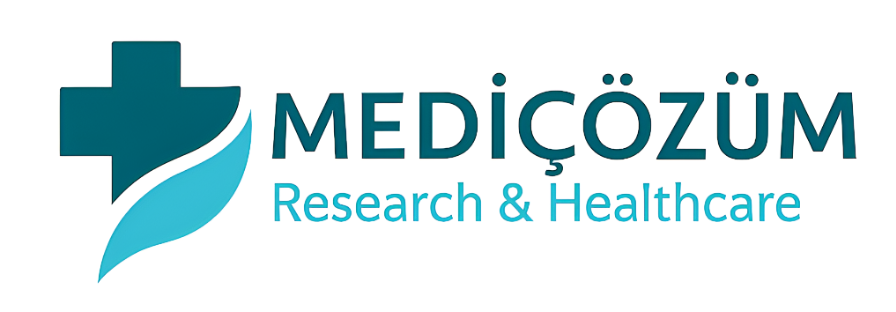Incidence and risk factors of polycystic ovary syndrome among women in reproductive age group attending a tertiary health care hospital
DOI:
https://doi.org/10.21276/t3mk7828Keywords:
PCOD, Reproductive age, Endocrine disorderAbstract
Introduction:- Polycystic ovary syndrome (PCOS) is a heterogeneous endocrine disorder. It leads to many health complications like menstrual dysfunction, infertility, hirsutism, acne, obesity, and metabolic syndrome.
Methodology:- 200 reproductive age group cases were included in this study. This study was conducted in Department of Gynecology. The duration of study was over a period of one year.
Result:- A total of 200 reproductive age group women participated in this study. The prevalence of PCOS was 21%. From the study it was found that the incidence of Poly Cystic Ovarian Syndrome is high in the age group less than 24 years. Relationship of regulation of menstrual cycle was significant association with development of PCOS. Who had having irregular menstrual cycle are at a risk of developing PCOS higher than the ones with a regular/normal menstrual cycle.
Conclusion:- The present study conclude that made aware the women about this syndrome, its complications and how to prevent it.
Downloads
References
Norman RJ, Dewailly D, Legro RS, Hickey TE. Polycystic ovary
syndrome. Lancet. 2007; 370:685–697.
Livadas S, Diamanti-Kandarakis E. Polycystic ovary syndrome:
definitions, phenotypes and diagnostic approach. Front Horm Res. 2013;
:1–21.
Zawadzki JK, Dunaif A. Diagnostic criteria for polycystic ovary syndrome:
towards a rational approach. Polycystic Ovary Syndrome. 1992:377–
Rotterdam EA-SPCWG. Revised 2003 consensus on diagnostic criteria
and long-term health risks related to polycystic ovary syndrome. Fertility
and sterility. 2004; 81:19–25.
Rotterdam EA-SPcwg. Revised 2003 consensus on diagnostic criteria
and long-term health risks related to polycystic ovary syndrome (PCOS).
Hum Reprod. 2004; 19:41–47.
Azziz R, Carmina E, Dewailly D, Diamanti-Kandarakis E, EscobarMorreale HF, Futterweit W, Janssen OE, Legro RS, Norman RJ, Taylor
AE, Witchel SF, Task Force on the Phenotype of the Polycystic Ovary
Syndrome of The Androgen E, Society P. The Androgen Excess and
PCOS Society criteria for the polycystic ovary syndrome: the complete
task force report. Fertility and sterility. 2009; 91:456–488.
Sirota I, Stein DE, Vega M, Keltz MD. Increased Insulin-Resistance and
beta-Cell Function in Polycystic Ovary Syndrome Women - Does
Ethnicity Play a Role? Reproductive Sciences. 2013;20:180a–181a.
Louwers Y, Lao O, Kayser M. Inferred genetic ancestry versus reported
ethnicity in polycystic ovary syndrome (PCOS) Human Reproduction.
;28:349–349.
Azziz R, Ezeh U, Pall M, Dumesic DA, Goodarzi MO. Effect of Race on
the Metabolic Dysfunction of Polycystic Ovary Syndrome (PCOS):
Comparing African-American (AA) and Non-Hispanic White (NHW)
Patients. Endocrine Reviews. 2010. p. 31.
Carmina E, Koyama T, Chang L, Stanczyk FZ, Lobo RA. Does ethnicity
influence the prevalence of adrenal hyperandrogenism and insulin
resistance in polycystic ovary syndrome? Am J Obstet Gynecol.
;167:1807–1812.
Norman RJ, Mahabeer S, Masters S. Ethnic differences in insulin and
glucose response to glucose between white and Indian women with
polycystic ovary syndrome. Fertility and sterility. 1995;63:58–62.
Engmann L, Jin S, Sun F, Legro RS, Polotsky AJ, Hansen KR, Coutifaris
C, Diamond MP, Eisenberg E, Zhang H, Santoro N, Reproductive
Medicine Network Racial and ethnic differences in the polycystic ovary
syndrome metabolic phenotype. Am J Obstet Gynecol.
;216:493.e1–493.e13.
Azziz R, Sanchez LA, Knochenhauer ES, Moran C, Lazenby J, Stephens
KC, et al. Androgen excess in women: Experience with over 1000
consecutive patients. J Clin Endocrinol Metab 2004;89(2):453-62.
Clark AM, Thornley B, Tomlinson L, Galletley C, Norman RJ. Weight loss
in obese infertile women results in improvement in reproductive outcome
for all forms of fertility treatment. Hum Reprod 1998;13:1502-5.
Legro RS, Strauss JF. Molecular progress in infertility: Polycystic ovary
syndrome. Fertil Steril 2002;78(3):569-76.
Doi SA, Al-Zaid M, Towers PA, Scott CJ, Al-Shoumer KA. Ovarian
steroids modulate neuroendocrine dysfunction in polycystic ovary
syndrome. J Endocrinol Invest 2005;28(10):882-92.
Legro RS, Castracane VD, Kauffman RP. Detecting insulin resistance in
polycystic ovary syndrome: Purposes and pitfalls. Obstet Gynecol Surv
;59(2):141-54.
Joshi B, Mukherjee S, Patil A, Purandare A, Chauhan S, Vaidya R. A
cross-sectional study of polycystic ovarian syndrome among adolescent
and young girls in Mumbai, India. Indian J Endocrinol Metabol.
;18:317-24.
Bharathi RV, Swetha S, Neerajaa J, VarshaMadhavica J, Janani DM,
Rkha SN, et al. An epidemiological survey: Effect of predisposing factors
for PCOS in Indian urban and rural population. Middle East Fertility
Society J. 2017;22:313-6.
Francis RC, Sajeeth CI, Mini NM. Prevalence, risk factors and treatment
strategies of polycystic ovary syndrome at various hospitals, Palakkad:
A prospective study. Int J Innov Res Med Sci. 2017;2(6):784-8.
Gupta M, Singh D, Toppo M, Priya A, Sethia S, Gupta P. A cross
sectional study of polycystic ovarian syndrome among young women in
Bhopal, Central India. Int J Comm Med Pub Health. 2018;5(1):95-100.
Sowmya D, Anitha S. Clinical study of polycystic ovarian syndrome
(PCOS) in tertiary care centre. Int J Reproduct Contracept Obstet
Gynecol. 2017;6:3247-51.
Begum GS, Shariff A, Ayman G, Mohammad B, Housam R, Khaled N.
Assessment of risk factors for development of polycystic ovarian
syndrome. Int J Contemp Med Res. 2017;4(1):164-7.
Mitra P, Guria S, Ghosh S, Chakraborti S, Chakraborty A, Das S, et al.
A preliminary study of clinical manifestations of polycystic ovary
syndrome (PCOS) in Kolkata. Int J Res Develop Pharma Life Sci.
;5(2):2074-9
Downloads
Published
Issue
Section
License
Copyright (c) 2024 International Archives of BioMedical and Clinical Research

This work is licensed under a Creative Commons Attribution-NonCommercial 4.0 International License.
Authors are required to sign and submit the completed “Copyright transfer Form” upon acceptance of publication of the paper. This is determined by a publishing agreement between the author and International Archives of Biomedical and Clinical Research. These rights might include the right to publish, communicate and distribute online. Author(s) retain the copyright of their work. International Archives of Biomedical and Clinical Research supports the need for authors to share, disseminate and maximize the impact of their research.












